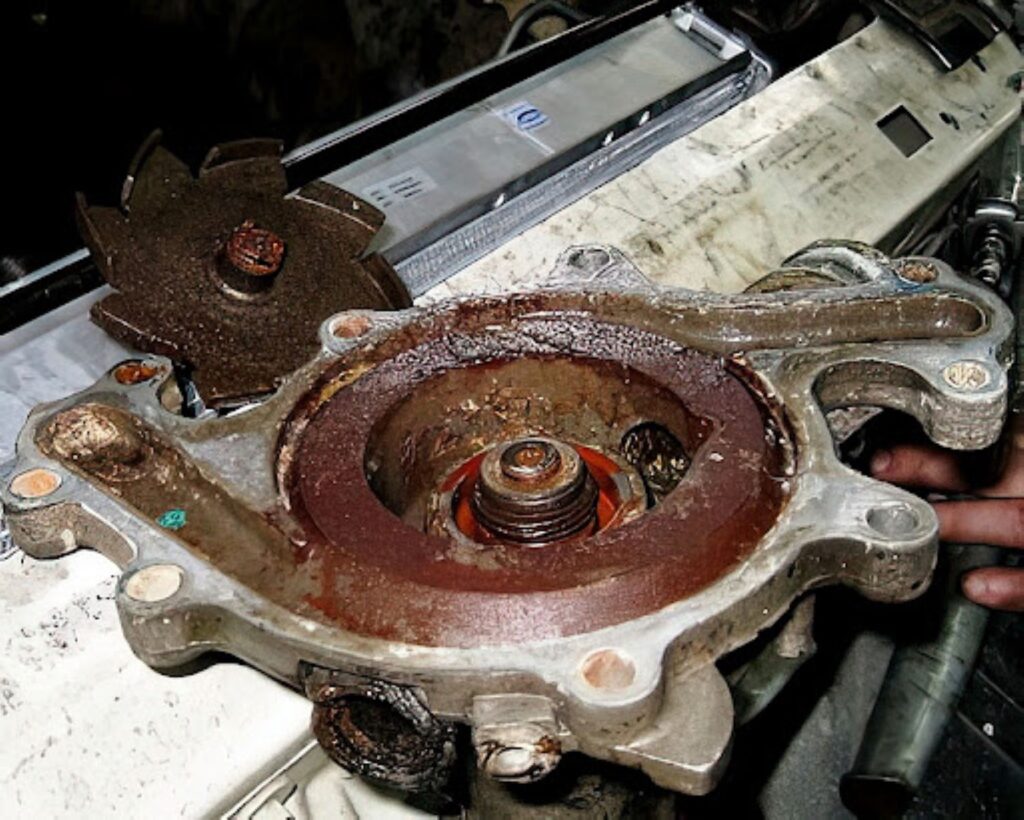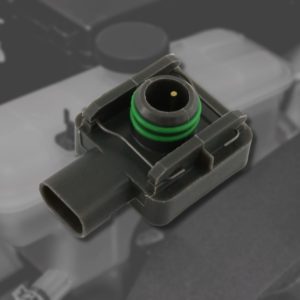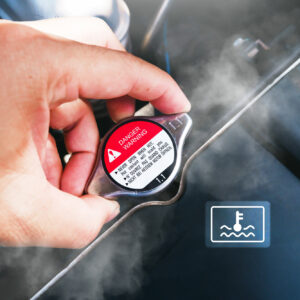Your cooling system needs coolant or antifreeze to regulate the engine’s temperature. So check your coolant level regularly, especially before you leave for a long road trip. If your ride runs out of coolant midway to your destination and far from shops that sell the fluid, can you top up your coolant tank with water instead?
Caution: To avoid serious burns, never open a hot cooling system. Always wait for the system to cool before removing the filler cap to check the level or add coolant.
The Straight Answer
Yes, you can put water in a coolant tank but only if it’s an emergency. After all, it’s better for the cooling system to have water instead of nothing.
You can pour water into your coolant tank when your engine is overheating. Wait for your engine to cool down before pouring water into the radiator or tank.
Make sure to repair the issue and top up your ride with the right coolant mix as soon as you can.
What Type of Water Should You Add to the Coolant Tank?
Distilled water is the best choice. You can also use tap water if you don’t have access to high-quality water. However, tap water has residue and minerals that can cause corrosion.
Why Is Coolant Better Than Water?
Coolant works better than water in keeping your engine cool. However, straight coolant should never be used because coolant that isn’t mixed with water will turn to jelly at about -10 degrees Fahrenheit. Here’s why you should stick with your manufacturer-recommended coolant mix:
Straight coolant should never be used because coolant that isn’t mixed with water will turn to jelly at about -10 degrees Fahrenheit.
–Richard McCuistian, ASE Certified Master Automobile Technician
Water Boils at Lower Temperatures
If you top up your tank with water instead of coolant, your cooling system will overheat faster. That’s because the boiling point of water is around 212 degrees Fahrenheit, while the boiling point of coolant is around 223 degrees Fahrenheit.
Water Freezes at a Much Highter Temperature Faster
Water freezes when temperatures drop, so if you live someplace cold, don’t replace your coolant with water. When water freezes, it expands about 9 percent by volume (everything else contracts when it gets colder), which can damage your coolant tank. In extreme cases, it can expand with enough force to crack the engine block, which is a much bigger problem than a damaged coolant tank.
Coolant also freezes, but its freezing point is lower than water’s. At -20 Fahrenheit, a good coolant/water mix will have the consistency of a slushie.
Water Causes Corrosion and Electrolysis
Tap water contains minerals that can leave deposits in the radiator and affect the cooling system’s performance. It can also be corrosive, especially at high temperatures. Corrosion and rust in the cooling system can cause it to malfunction.
Most coolant or antifreeze mixes contain ethylene glycol or propylene glycol, substances that won’t corrode most metals easily. They also have additives that prevent corrosion.
Aluminum parts, like most water pump housings, can cavitate, reducing the effectiveness of the water pump. If the pump impeller is steel, the impeller can rust away.

Testing Your Coolant

How to Choose the Right Coolant for Your Car
Not all coolants will work on your ride, and using the incorrect one can corrode the radiator, radiator hoses, water pump, and cylinder gasket. Follow these tips to choose the right coolant or antifreeze for your car.
Consult the Owner’s Manual
The owner’s manual indicates the recommended coolant mix for your vehicle. The right type depends on the manufacturer, model, and age.
You can also contact your dealership for additional information. Dealerships usually recommend the same mix mentioned in the owner’s manual and its aftermarket equivalents.

Determine the Right Coolant Type
There are three major coolant types available on the market: IAT, OAT, and HOAT.
Inorganic Acid Technology (IAT)
Most older vehicles use IAT coolant, which requires changing every two years. It was phased out because it becomes acidic over time.
Organic Acid Technology (OAT)
OAT coolant is a step up from IAT, but it still has corrosion-related issues. Many General Motors (GM) vehicles use it, and it needs to be changed every five years.
Hybrid Organic Acid Technology (HOAT)
Hybrid coolant has corrosion-resistant properties because it has silicates and organic acids that help protect the cooling system. Its formulation is based on IAT and OAT. Many Ford, Chrysler, and European cars use hybrid coolant.
Consider Coolant Color
Coolant color alone can’t indicate whether the formula is compatible with your ride, but it can help ensure you’ve got the right type.
IAT coolant is usually yellow or green, while HOAT coolant is turquoise and other colors. Note that some OE coolants come in unique hues. For example, Honda OE coolants are often blue.
Read the Coolant Instructions
Some coolant and antifreeze formulas need to be mixed with distilled water. If you want ready-to-use variants, double-check the coolant containers’ instructions to see if they need water. If you’re buying coolant online, check the product information.
Whether you’re getting one that needs water or not, make sure you follow its instruction to ensure it works.
Why Is Coolant Important?
The coolant absorbs the heat in the engine and releases it into the air. It flows through the channels in the engine block with the help of a water pump. You can check out this article to learn more about how a cooling system works.
The Bottom Line
You can put water in your coolant tank only when your engine overheats. Otherwise, don’t top up your tank with water to prevent corrosion and rust buildup in the cooling system. Make sure to choose the right coolant for your ride, check your ride’s coolant regularly, and ensure it’s at the ideal level.
How to Get Coolant for Your Vehicle
If you’re thinking about topping up your tank with water instead of coolant, please think again. Not only is water only to be used in emergencies, it can also permanently damage your engine block, which can be expensive to fix. Save your money and get yourself coolant from CarParts.com instead.
CarParts.com offers a wide selection of coolants that are all sourced from the most trusted manufacturers in the industry. You can also easily browse through our catalog by using our vehicle selector and search filters. Just be sure to input your vehicle’s correct details. If you’re itching to get back on the road as soon as possible, you’ll be pleased to know that CarParts.com also guarantees fast shipping, thanks to our strategically located warehouses. Order by 12 p.m. ET, and you can expect your new coolant to arrive in as fast as two business days.
Don’t risk your engine and entire cooling system by topping up your coolant tank with water instead of antifreeze. Check out our catalog of high-quality coolants at CarParts.com and order today!
Any information provided on this Website is for informational purposes only and is not intended to replace consultation with a professional mechanic. The accuracy and timeliness of the information may change from the time of publication.































